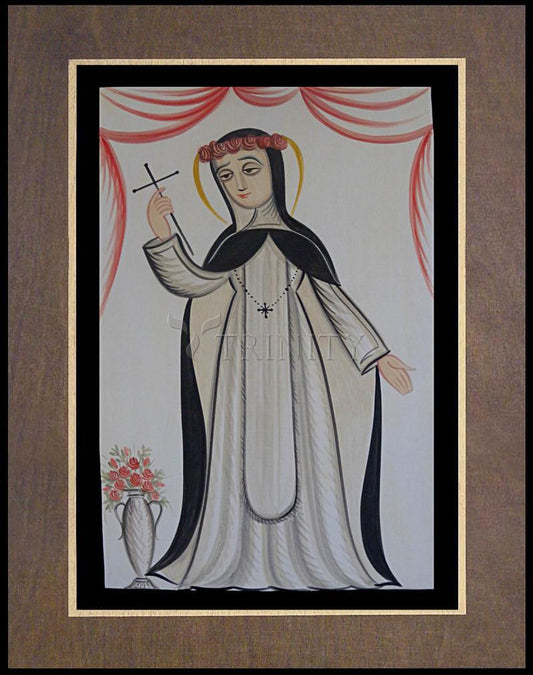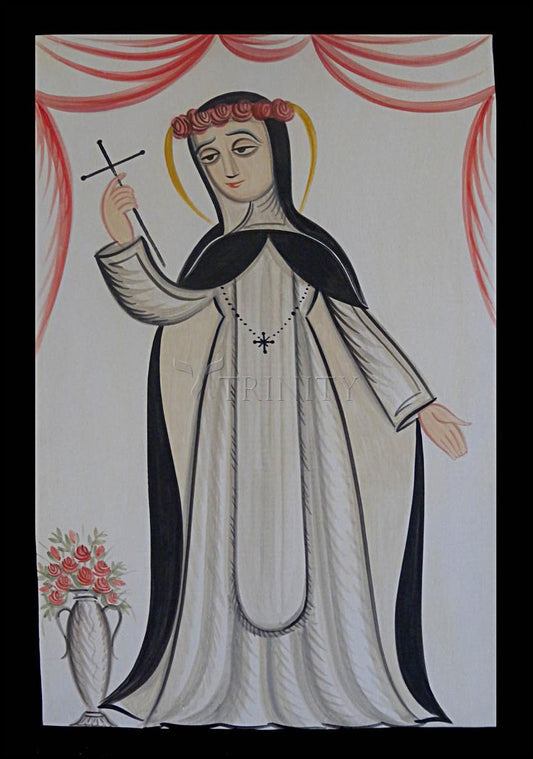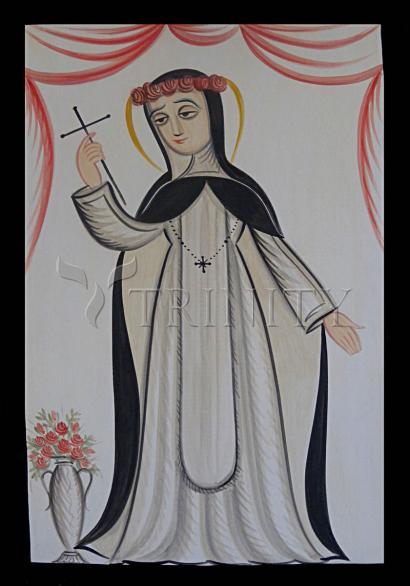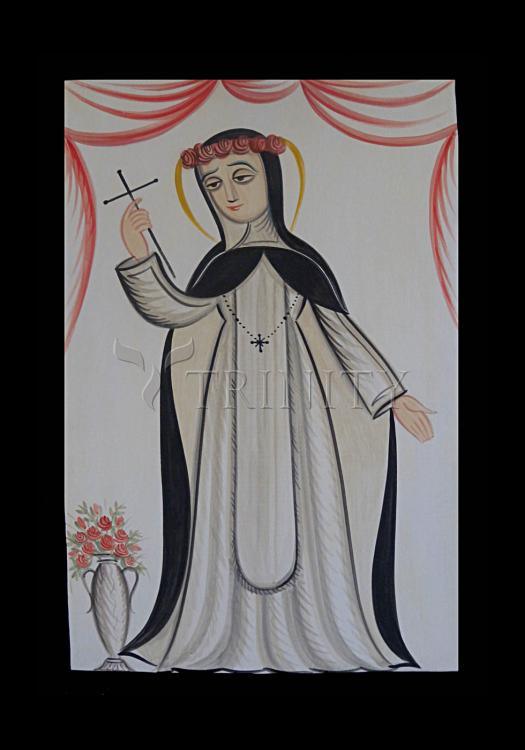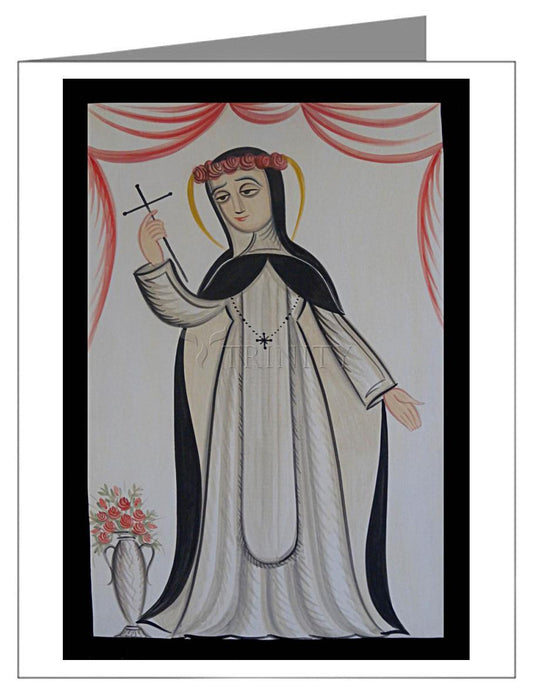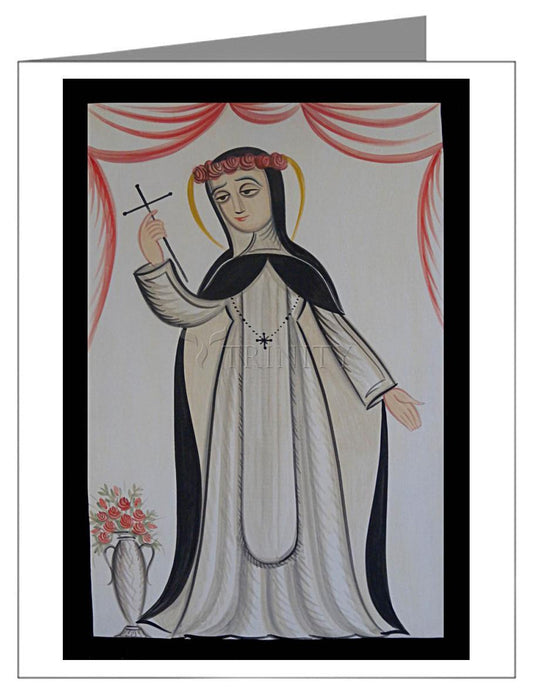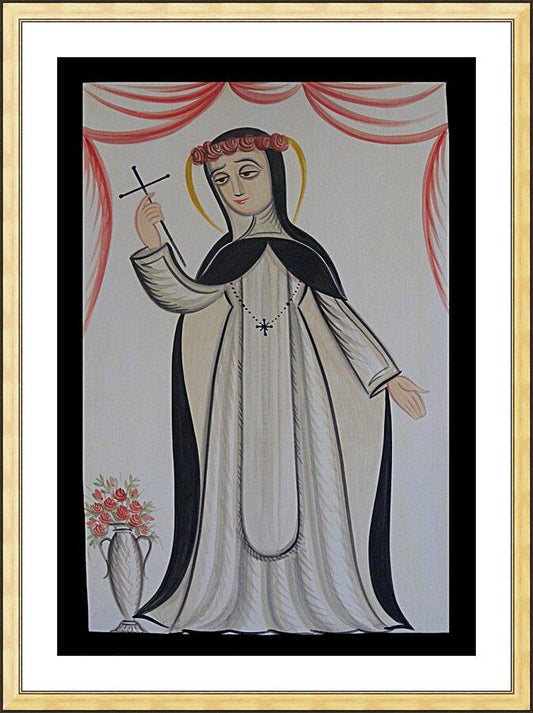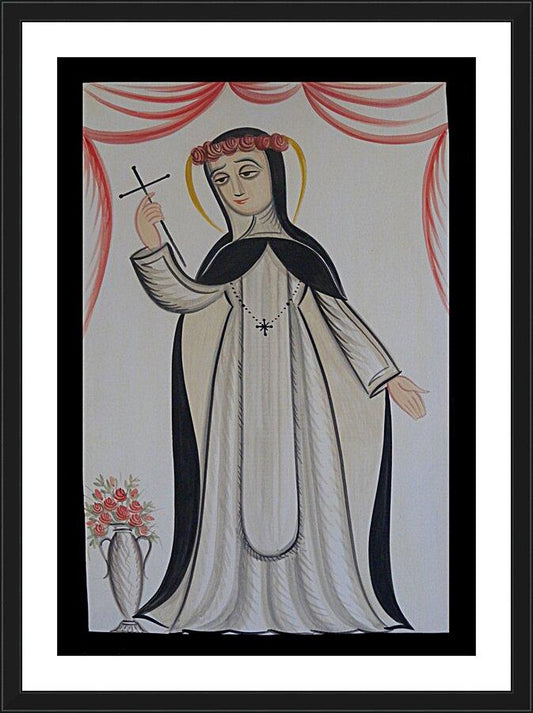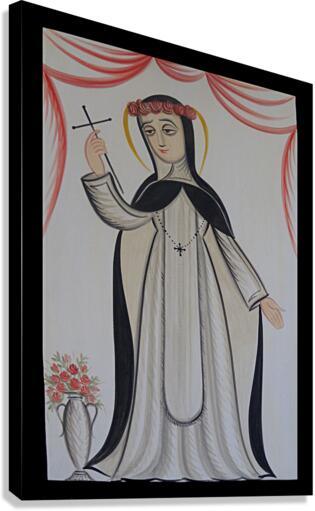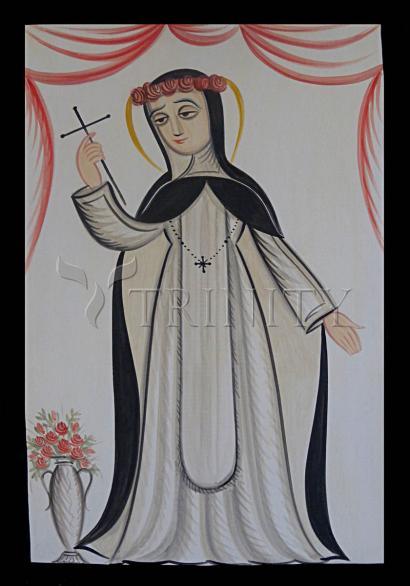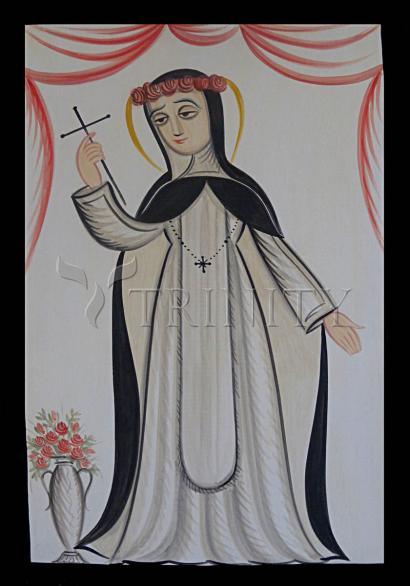Isabel del Flores y del Olivia, known to history as St. Rose of Lima, was born in Lima, Peru, on 20th April 1586. Her father, Gaspar del Flores, was a well-to-do Spaniard and her mother, Maria del Olivia, was of Spanish descent with a mixture of Inca blood. The baby was one of ten siblings. She was baptized on the day of her birth, with her aunt, Isabel de Herrara, acting as her godmother. The baby was named after her aunt, Isabel. Because the child was so beautiful, she was nicknamed Rosa or Rose. History and her family would call her by this name.
Rose was born a little over fifty years after the fabulous land of Peru had been discovered and forcefully seized for Spain by the conquistador Francisco Pizarro. Rose's life can be understood properly within the historical context in which she was born and lived. It was an age of extremes. It was a time of recent foreign conquests, brutality and injustices inflicted on the indigenous Indian people of Peru. The discovery of what seemed to be endless mineral resources in Peru did next to nothing to ennoble the lives of the indigenous Indians. Instead, Peru's gold and silver were mined and shipped back to Spain to enrich its empire and embellish its many cathedrals and palaces. The natives were left oppressed and impoverished, despite some missionaries' valiant efforts to alleviate the miseries of the native Peruvians. Furthermore, this was the era of the fervent spring of an overdue reform in the Catholic Church brought about by the Council of Trent. The climate in Rose's homeland was that of a new wilderness, a Spanish civilization thinly laid over the native Indian culture, and one conducive to excess. The native people of Peru had passively accepted the outward aspects of the imposed new religion of Christianity. The new faith of the Peruvian natives was no more than a veneer of the old beliefs and primitive superstitions. Rose grew up to understand very well this historical setting and its implications. She fervently prayed for the eradication of idolatry in her native land.
While Rose was still a child, her father Gaspar, caught up in the Spanish quest for self-enrichment through mining projects, lost the family's fortune in successively failed mining ventures in the Andes Mountains.
Consequently, her wealthy family fell on hard times and Rose was raised in poverty. Since the age of five, she had to lend a helping hand to procure some of her family's income. She excelled in needlework or embroidery, working up to ten hours a day. The selling of her artifacts proved to be a good augmentation of her family's humble income.
Rose grew into a beautiful young girl and some worthy suitors sought her hand in marriage. Her parents wanted her to marry, but the ever obedient and respectful Rose, in this singular case, resisted their wishes because she fervently desired to dedicate her life completely to the Lord, as her model, the Dominican St. Catherine of Siena, had done.
Fearing her beauty to stand as an obstacle in her spiritual life and that of others, she rubbed lime all over her hands and pepper over her striking face in an effort to disfigure herself. After a ten year long struggle, her parents relented and allowed her to build a garden hut where, with the permission of her confessor, she became a practical recluse. She was determined to offer her life in reparation for sin and corruption in her society. Because of her resolve to do so, she inflicted various severe penances on herself, including the wearing of a spiked crown that she hid by covering it with roses, and limited her eating and sleeping to a bare minimum. It was at this time that she became a strict vegetarian.
Although Rose lived the life of a recluse, she never lost touch with the outside world. She was very much aware of what was going on in her contemporary oppressed Peruvian society. She occasionally visited hospitals to nurse the sick and the poor. Without intending to do so, Rose became a public symbol of virtue. Those who met her were deeply impressed by the love for God that radiated from her. Her corporal works of mercy were the seeds of social work in Peru. Rose also spent many hours in prayer before the Blessed Sacrament and received daily Holy Communion, something that would be unheard of for centuries.
Rose had two canonized saints who played an important role in her spiritual journey. The first one was St. Turibius de Mongrovejo, the archbishop of Lima. This saint, born in Spain, was the Bishop of Lima for some eight years when Rose was born. He burned with apostolic zeal. He promoted religious and social reform throughout Peru, devoting much of his time to defend and help the native Indian population. St. Turibius was the bishop who confirmed our saint, giving her the confirmation name of Rose. The second saint in the life of St. Rose was a fellow countryman and Dominican brother, St. Martin de Porres. Like his friend Rose, Martin had a profound devotion to the Holy Eucharist and the caring for the sick.
Rose joined the Third Dominican Order when she was twenty and took a vow of virginity. The public vow ratified the private vow of virginity that she had taken as a girl. She was single-minded to grow spiritually beautiful only for the Lord.
Rose spent the last few years of her very short life in the home of a Spanish government official, Don Gonzalo de Massa. During these years she would bring to her room homeless children, the elderly and the sick to look after them. Although living as a guest at the official's home, Rose did not hesitate to protest against some of the harsh practices of the Spanish overlords, alleging that the sufferings of the poor were caused by the conquerors' greed. During her last illness, she was frequently heard praying: "Lord, increase my sufferings, and with them increase your love in my heart."
Rose died on 24th August 1671 at the tender age of thirty-one. The Spanish officials, whom she had criticized for the injustices they had imposed on the native Indian people, struggled among themselves to be privileged in carrying her coffin.
St. Rose's contribution to the Christianity in the Americas was very impressive. During her very short life, Rose suffered from an assortment of physical ailments and spiritual trials. She was a recluse, a mystic Dominican Tertiary, a visionary, the founder of social work in Peru, the receptor of an invisible stigmata, a model of virtue, and highly accomplished in embroidery. Undoubtedly there were very complex psychological strands present in her life. Rose had one characteristic common to all saints, the suffering induced by opposition. She also possessed another characteristic that is more to be admired rather than imitated, the excessive practice of penance.
Pope Clement X canonized Isabel del Flores y del Olivia under the name of St. Rose of Lima on April 2, 1671. She is the first native saint of the New World. Her feast day falls on August 23rd.
Born: 1586 at Lima, Peru as Isabel
Died: August 23, 1617 at Lima, Peru
Canonized: April 2, 1671 by Pope Clement X



